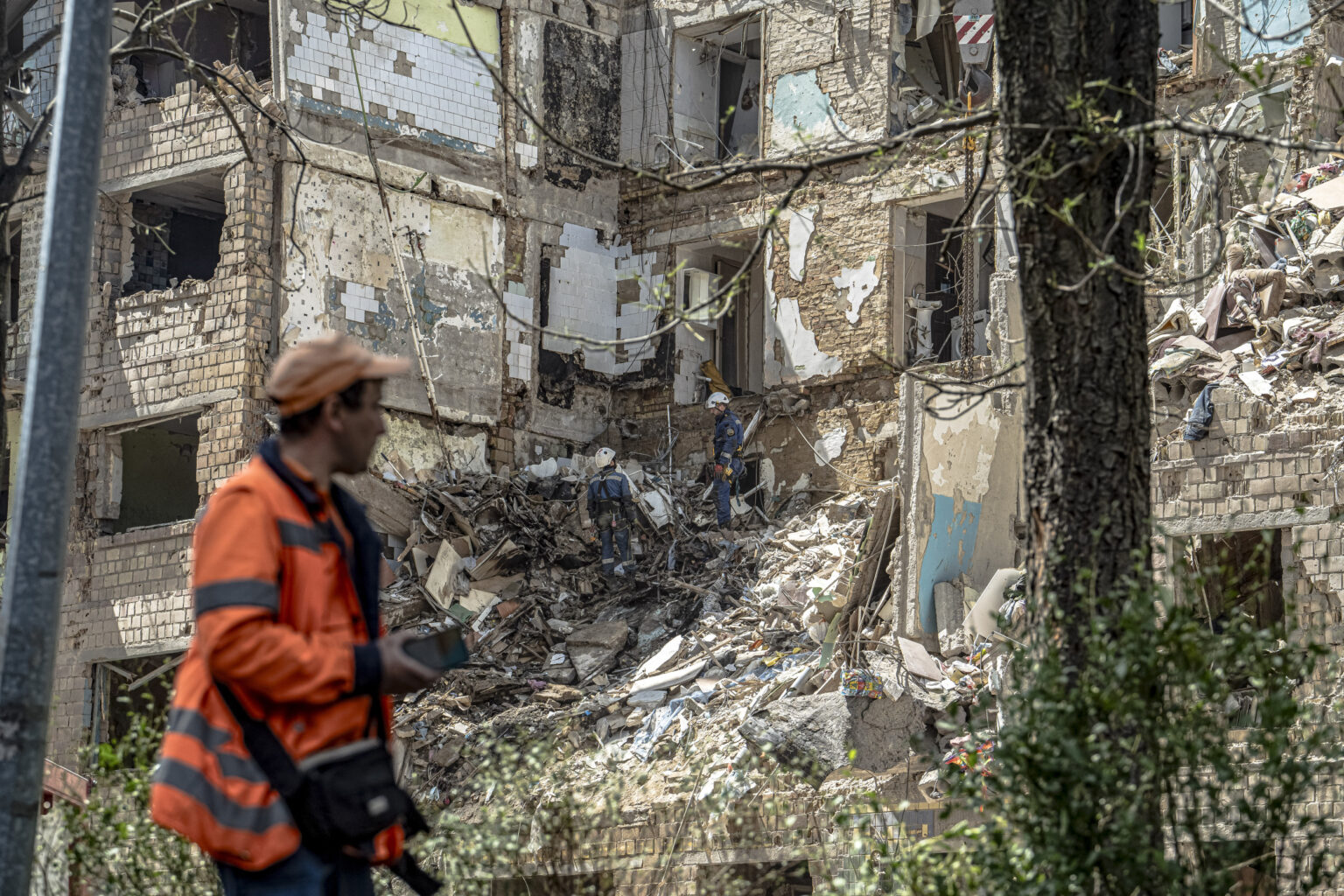Russia has introduced a new guided glide bomb into its full-scale invasion, which marks Moscow’s push to develop aerial weapons to bombard Ukraine’s infrastructure.
Ukrainian authorities said that Russia’s new UMPB-5 guided aerial bombs had been dropped by Sukhoi Su-34 fighter jets on two regions in the last two months amid testing of the new weapon.
Analysis shared with Newsweek by the Foundation for Defense of Democracies (FDD), a Washington, D.C., think tank, said that the glide bomb was part of Russia’s growing efforts to develop cheap standoff guided munitions.
Newsweek has contacted the Russian Defense Ministry via email for comment.
Why It Matters
Before Vladimir Putin’s full-scale invasion of Ukraine, Moscow underestimated how many glide bombs and other guided munitions it would need. Russia’s glide bombs before the war were relatively expensive and so used sparingly.
The FDD’s John Hardie said Russia’s failure to destroy most of Ukraine’s air defenses at the invasion’s start pushed Moscow to swiftly develop cheap glide bombs with standoff range that will allow its air force to play a greater role.
What To Know
Ukrainian authorities said the UMPB-5 was first used in Ukraine’s Sumy region and then on two consecutive days of strikes on the city of Kharkiv on July 24 and 25; one attack hit a hospital.
In the second instance, a Su-34 released the bomb about 65 miles away from Russia’s neighboring Belgorod region; this is according to Spartak Borysenko from the Kharkiv Prosecutor’s Office, which investigates such attacks as war crimes.
Borysenko said Russia is still testing the weapon and that its exact characteristics are not yet known. But the name of the UMPB-5 glide bomb suggests it is a derivative of the UMPB D-30SN, which was first seen in spring 2024, the FDD said.
The latter model has a longer range than the 50 miles of its predecessor and has warhead that weighs 2.5 times more, at around 550 pounds.
Cheap glide bombs are playing a greater role in Russia’s aggression with Moscow; an average of 160 were dropped each day in July 2025, according to President Volodymyr Zelensky—eight times more than spring 2023.
The main one used is the UMPK, or “Universal Gliding and Correction Module,” first seen in January 2023. It is designed to fit on dumb bombs and was initially employed with the FAB-500 M-62, a 1,100-pound-class high-explosive bomb, but since adapted for bombs of various sizes.
Borysenko said that Moscow started using a modified UMPK with larger wings and a range of at least 60 miles in the Sumy and Kharkiv regions in May. With further testing, this range could increase, as suggested by a Russian Telegram channel.
Russia is also developing low-cost air-launched cruise missiles, such as the recently unveiled S8000 BanderoL, which can be launched via remotely piloted aircraft.
What People Are Saying
John Hardie, deputy director of FDD’s Russia Program, said Moscow is using a new UMPB-5 guided glide bomb, which: “appears to be a more-powerful derivative of a bomb introduced last year, reflecting the Russian Air Force’s efforts to develop a growing variety of cheap standoff guided munitions.”
Spartak Borysenko, from the Kharkiv Regional Prosecutor’s Office, said: “UMPB-5 is a new ammunition that the Russians began using about two months ago … they are currently testing it, and the exact characteristics are not known for certain.”
What Happens Next
Hardie said that details about these new munitions remain scarce, but Russia’s Air Force and Naval Aviation are focused on producing large quantities of inexpensive standoff munitions.
Whether Russia will address its shortcomings in destroying enemy air defenses is a problem “that will be much harder to solve,” Hardie added.
Read the full article here

